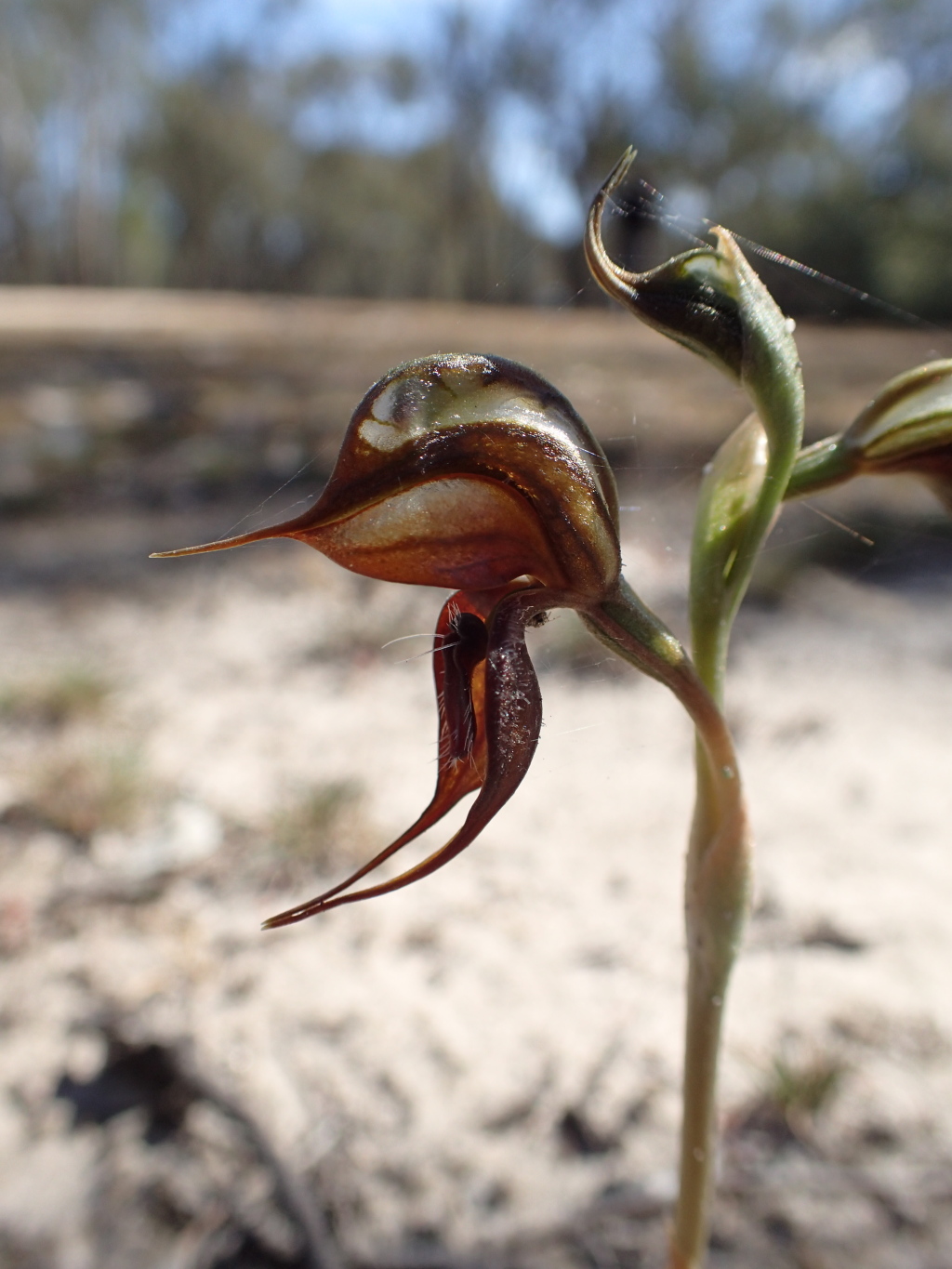Pterostylis cheraphila
D.L.Jones & M.A.Clem.Flowering plant to 25 cm tall, stem leaves 3–5, closely sheathing. Rosette leaves 6–12, narrowly ovate to elliptic, 6–22 mm long, 3–6 mm wide. Flowers 1–7, porrect or semi-erect, c. 1.5 cm long, mostly dark red-brown with some transparent areas in the galea, glossy; dorsal sepal with a straight to upcurved filiform point 7–11 mm long; lateral sepals deflexed, conjoined part broadly ovate in outline when flattened, shallowly concave, margins slightly incurved, densely ciliate, free points filamentous, 10–23 mm long, deflexed, nearly parallel, c. 10 mm apart at the tips; petals with a poorly developed proximal flange. Labellum obovate, 6–7 mm long, 3–3.5 mm wide, dark brown, thin-textured, margins scalloped; marginal hairs 9–12 pairs, c. 1.5 mm long, white, spreading; basal lobe sloped backwards, with 2 prominent erect hairs c. 3 mm long. Flowers Oct.–Nov.
LoM, MuM, Wim, VRiv, MuF, GGr. Endemic to Victoria where localised and known only from the Little Desert area and near Murtoa in riverine Eucalyptus largiflorens woodland, growing amongst ephemerals on sandy loam or cracking silty soils.
Pterostylis cheraphila forms part of a complex of species (including P. maxima, P. planulata and P. sp. aff. biseta (Pink Lakes)) previously referred to P. biseta.
Most similar in appearance to P. maxima, but that species has broader rosette leaves, a broader labellum and favours different habitats.
Plants are subject to inundation during peak floods.
Jones, D.L. (1994). Pterostylis. In: Walsh, N.G.; Entwisle, T.J., Flora of Victoria Vol. 2, Ferns and Allied Plants, Conifers and Monocotyledons, pp. 798–830. Inkata Press, Melbourne.
 Spinning
Spinning